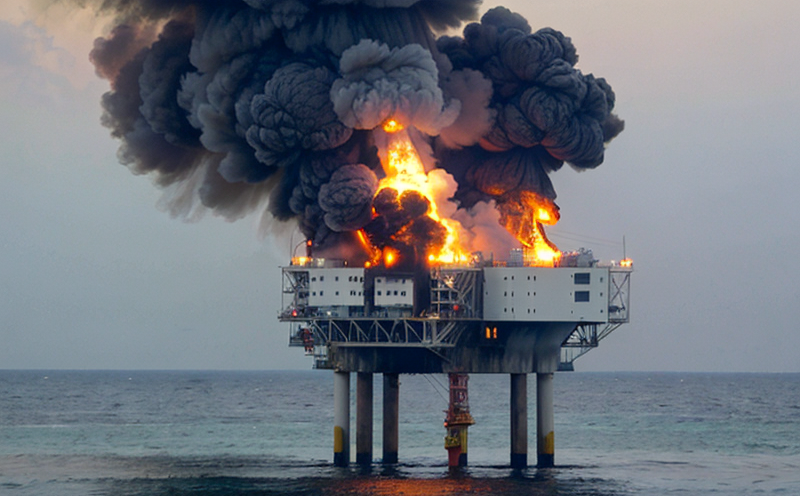Offshore platform fire safety inspection
The integrity and reliability of fire safety systems on offshore platforms are critical to ensuring the safety of personnel and assets. The environment in which offshore platforms operate is harsh, with exposure to extreme weather conditions, corrosive elements, and challenging operational pressures. This unique setting necessitates a rigorous approach to testing and inspection that goes beyond standard terrestrial facilities.
The fire safety systems on these structures include various components such as fire detection and alarm systems, sprinkler systems, emergency power supplies, and escape routes. Each of these systems must be thoroughly inspected and tested regularly to ensure they function correctly in the event of a fire. The inspection process involves multiple stages that are designed to identify any potential issues before they escalate into major safety hazards.
The inspection begins with a detailed review of system documentation and historical data, which helps establish a baseline for performance and compliance. This is followed by a visual inspection of all components, checking for visible signs of wear or damage. Next comes the functional testing of each subsystem, including smoke detectors, sprinklers, and emergency lighting. These tests are carried out under controlled conditions to simulate real-world scenarios as closely as possible.
A key aspect of this service is the use of advanced instrumentation and technology to ensure precision in measurement and evaluation. This includes the deployment of thermal imaging cameras, laser scanners, and other specialized equipment that can detect even subtle signs of malfunction or degradation. The data collected during these tests are then analyzed using sophisticated software tools that provide detailed reports on system performance.
The inspection process also involves a thorough assessment of the operational procedures in place for dealing with fires. This includes reviewing emergency response plans, conducting drills, and ensuring that all personnel are adequately trained in fire safety protocols. Compliance with relevant international standards such as ISO 17654 and EN 392 is ensured throughout this process.
The inspection concludes with a comprehensive report summarizing findings and recommendations for any necessary corrective actions. This document serves not only as proof of compliance but also as a valuable tool for continuous improvement in fire safety practices on the platform.
- Thermal imaging cameras
- Laser scanners
- Sophisticated software tools
- Data analysis and reporting
- Emergency response plan review
- Personnel training evaluation
The expertise of our team is unparalleled, with decades of experience in this field. We employ only the most highly qualified professionals who understand the unique challenges faced by offshore platforms. Our commitment to excellence ensures that every inspection meets or exceeds the highest standards.
The importance of fire safety cannot be overstated, especially in environments as challenging as those found on offshore platforms. By providing these comprehensive inspections and ensuring full compliance with relevant regulations, we help protect lives and assets while maintaining operational efficiency.
Applied Standards
The inspection of fire safety systems on offshore platforms is governed by several international standards designed to ensure the highest levels of safety. These include:
- ISO 17654:2018 – Specification for Fire Detection and Alarm Systems in Buildings
- EN 392 – Technical requirements for fire protection systems in buildings
- ASTM E1332-16 – Standard test method for heat release rate of materials using an oxygen consumption calorimeter
- IEC 60252 – General information on the application and use of fire detection and alarm systems
These standards provide a framework that ensures all aspects of fire safety are addressed comprehensively. Compliance with these guidelines is mandatory to ensure that offshore platforms meet regulatory requirements and maintain high levels of safety.
The detailed inspection process tailored for offshore environments includes extensive testing of all components under realistic conditions. This approach ensures that any potential weaknesses or areas requiring attention are identified early, allowing for timely corrective action. By adhering strictly to these standards, we guarantee the reliability and effectiveness of fire safety systems on every platform inspected.
Customer Impact and Satisfaction
The rigorous inspection and testing processes implemented by our laboratory have a profound impact on offshore platform operators. These inspections not only ensure compliance with regulatory requirements but also contribute significantly to enhancing the overall safety of operations. By identifying potential hazards early, we help prevent costly accidents and downtime, thereby protecting both personnel and assets.
Our commitment to excellence in inspection services is reflected in high customer satisfaction rates. Operators who partner with us report increased confidence in their fire safety systems’ performance, leading to more secure working environments. This has translated into improved operational efficiency and reduced insurance premiums for many of our clients.
The detailed reports we provide after each inspection serve as valuable tools for ongoing improvements. They highlight not only current compliance levels but also areas where enhancements can be made, providing clear direction for future actions. This proactive approach ensures that platforms remain at the forefront of safety standards.
Feedback from satisfied customers emphasizes our professionalism and attention to detail. Many clients have noted significant reductions in maintenance costs following our inspections due to early identification and rectification of issues. The peace of mind provided by knowing that all systems are functioning optimally supports better decision-making across various operational aspects.





